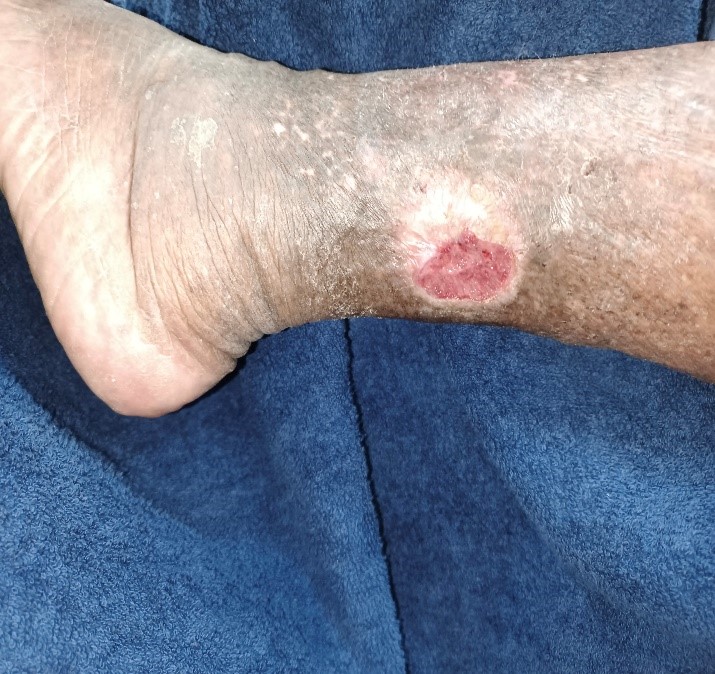
Ulcer by definition is a breach in continuity of the epithelium as a result of slow molecular the death of cells.
In simple terms it looks like a wound.. But with a relatively slow onset as compared to any injury.
Technically there are various types of ulcers
1.. Healing ulcer where the slopes of the ulcer are slanting. In addition it has a sticky but clean discharge and there is no foul odour
2.. Non healing ulcer where the edges are irregular, there may be pus discharge and a lot of yellow tissue dead tissue or slough
There are other types of ulcers but not relevant to Diabetic foot infection and ulcers.
When an ulcer occurs it is imperative to find out the type of an ulcer. Once infected antibiotics need to be instituted along with local wound care. We shall be discussing wound care in a separate topic but I would like to stress here that moist wound healing is the key to good wound healing.
Arterial ulcers.. These are primarily as a result of diminished blood flow through the arteries
Venous ulcers.. You all must have heard of Varicose veins where the impure blood or deoxygenated blood is not effectively carried towards the heart as a result of which the tissues in the lower part of the leg.. Loses elasticity and can ultimately ulcerate. The standard treatment for such venous ulcers is to elevate the limb and in extreme cases or resistant cases to give a 4 layer compression dressing.
Vasculitis.. An autoimmune ulcer which is very resistant to treatment, more likely to be painful. The diagnosis of this can only be established by an edge biopsy and it has to be read by a competent dermatohistopathologist. The treatment of this is done by a qualified Rheumatologist in conjunction with the standard protocols of wound care.
